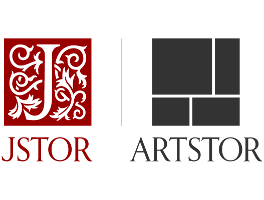
 Outcomes:
Outcomes: digital resources, including the library catalog, article databases,
digital resources, including the library catalog, article databases,
Ami Vitale. Amer/Amber Fort. Built by Meenas King Raja Alan Singh Chanda. 2011. JSTOR, https://jstor.org/stable/community.12116887. Accessed 6 Mar. 2025.
SCHOLARLY JOURNAL ARTICLE

MLA Citation for Works-Cited List:
Micle, Maria. "Stereotypes Regarding Libraries and Librarians: An Approach of Romanian School
and Academic Libraries." Procedia - Social and Behavioral Sciences, vol. 163, 2014, pp.
92-98. Science Direct, https://doi.org/10.1016/j.sbspro.2014.12.291.
NOTE: This entry has TWO (2) containers. That is because the article (source) is contained within the first container (the journal). The journal is contained within the second container (the database).
BOOK CHAPTER

MLA Citation for Works-Cited List:
Ghosh, Ranjan. "Making Sahitya Matter." Thinking Literature Across Continents, edited
by Ranjan Ghosh and J. Hillis Miller, Duke University Press, 2016, p. 27.

MLA Citation for Works-Cited List:
Ceron, Andrea, et al. Politics and Big Data: Nowcasting and Forecasting Elections with Social Media.
Routledge, 2017.
NOTE: Because we are citing the entire source and not just a chapter, we do not use quotation marks around the title. Instead, we treat the title of the source as we would the container of the source. In this case, we italicize the title of the source.

MLA Citation for Works-Cited List:
"Market Analysis." Starting & Managing. U.S. Small Business Administration, https://www.sba.gov/starting-
business/write-your-business-plan/market-analysis.
Original Images by YOU or your GROUP Project: Either (at minimum) state your full name and year as the caption or, if you choose no captions, put a statement at the top of your reference list claiming, "All uncredited images were created by the author/designer of this project." If an image was created by a single individual, it's best to credit their name in the caption. If an image was created with multiple people's input but not the entire group, credit the contributing members in the caption.
![[Frances Benjamin Johnston, full-length portrait, seated in front of fireplace, facing left, holding cigarette in one hand and a beer stein in the other, in her Washington, D.C. studio]](https://d2jv02qf7xgjwx.cloudfront.net/accounts/90420/images/service-pnp-cph-3b10000-3b11000-3b11800-3b11893r.jpg)
Johnston, Frances Benjamin, photographer. Frances Benjamin Johnston, full-length portrait, seated in front of fireplace, facing left, holding cigarette in one hand and a beer stein in the other, in her Washington, D.C. studio. Washington D.C, 1896. Photograph. https://www.loc.gov/item/98502934/.
Image Creator. | Image Title and/or Description | Image Medium. Image Container
See also this description from OWL Purdue, 'Other Source...' which is a formal citation,
The credit line in the above example includes the medium because it's added information about the image, an added bonus to the credit line, but not mandatory.
"If you viewed the artwork on the museum's website, treat the name of the website as the container and include the website's publisher and the URL at the end of the citation. Omit publisher information if it is the same as the name of the website. Note the period after the date below, rather than the comma: this is because the date refers to the painting's original creation, rather than to its publication on the website. Thus, MLA format considers it an "optional element."
Goya, Francisco. The Family of Charles IV. 1800. Museo del Prado, museodelprado.es/en/the-collection/art-work/the-family-of-carlos-iv/f47898fc-aa1c-48f6-a779-71759e417e74.
Reverse Image Search: If you're wondering about the origin of an uncredited image,search engines like Google and TinEye allow you to search using the image itself so you can see other places where it exists on the web.


Although you can use natural language in Google Scholar, like you do in Google, you can also use Boolean operators and phrase searching like you have been taught to use in the library databases.
You can use "limit" option to locate records with illustrations: plans, maps, photos, elevations, isometric drawings, etc (select type of illustrations from the menu and apply limits).

Search JSTOR/ArtStor using your chosen terms. AND is assumed between words. OR works only if in capital letters. NOT or the minus sign - can be used to exclude terms. Do not put a space between the mark and the search term.
For example, searches like: